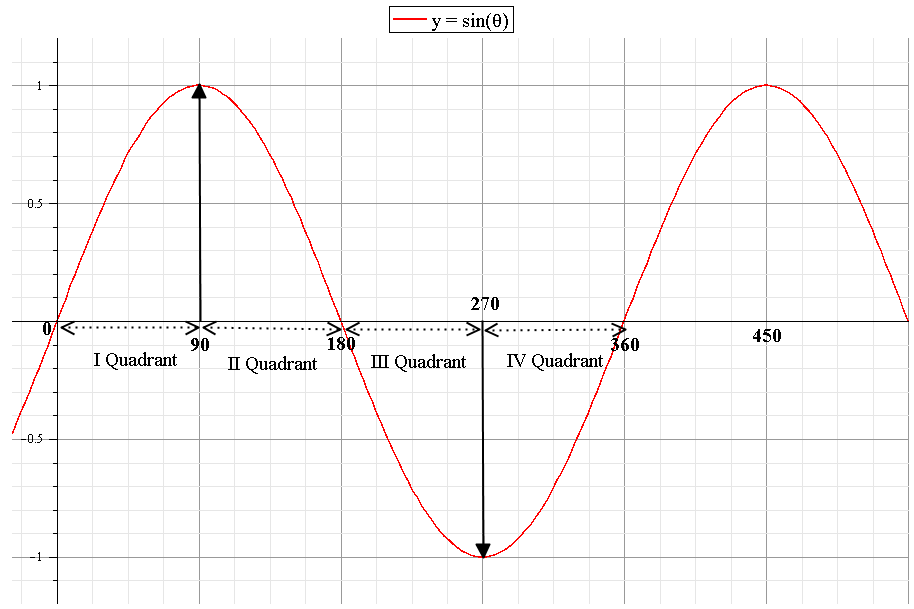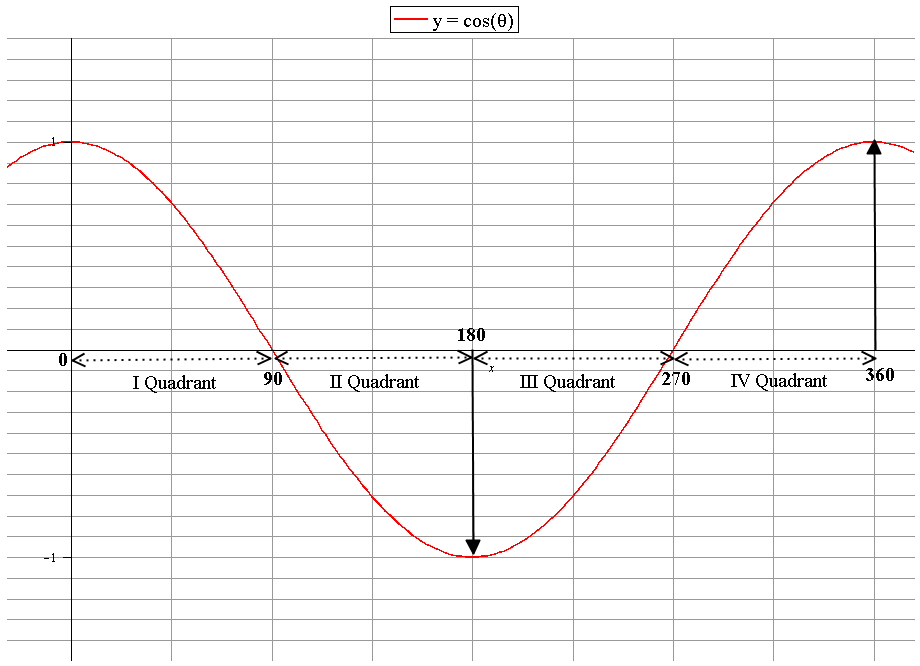If you sketch a unit circle with angle θ in standard position...?
For what values of θ is the sine increasing? Decreasing?
For what values of θ is the cosine increasing? Decreasing?
For which angle between 0° and 360° is sine equal to 0? Where is cosine equal to 0?
For what values of θ is the sine increasing? Decreasing?
For what values of θ is the cosine increasing? Decreasing?
For which angle between 0° and 360° is sine equal to 0? Where is cosine equal to 0?
1 Answer
See below.
Explanation:

Looking at the graph of the sine function, we can see that.
In quadrant I the ratio is increasing from.
In quadrant II the ratio is decreasing from.
In quadrant III the ratio is decreasing from.
In quadrant IV the ratio is increasing from.
For the cosine function we have:

In quadrant I the ratio is decreasing from.
In quadrant II the ratio is decreasing from.
In quadrant III the ratio is increasing from.
In quadrant IV the ratio is increasing from.
We can see from the sine graph that
And from the cosine graph
At:

